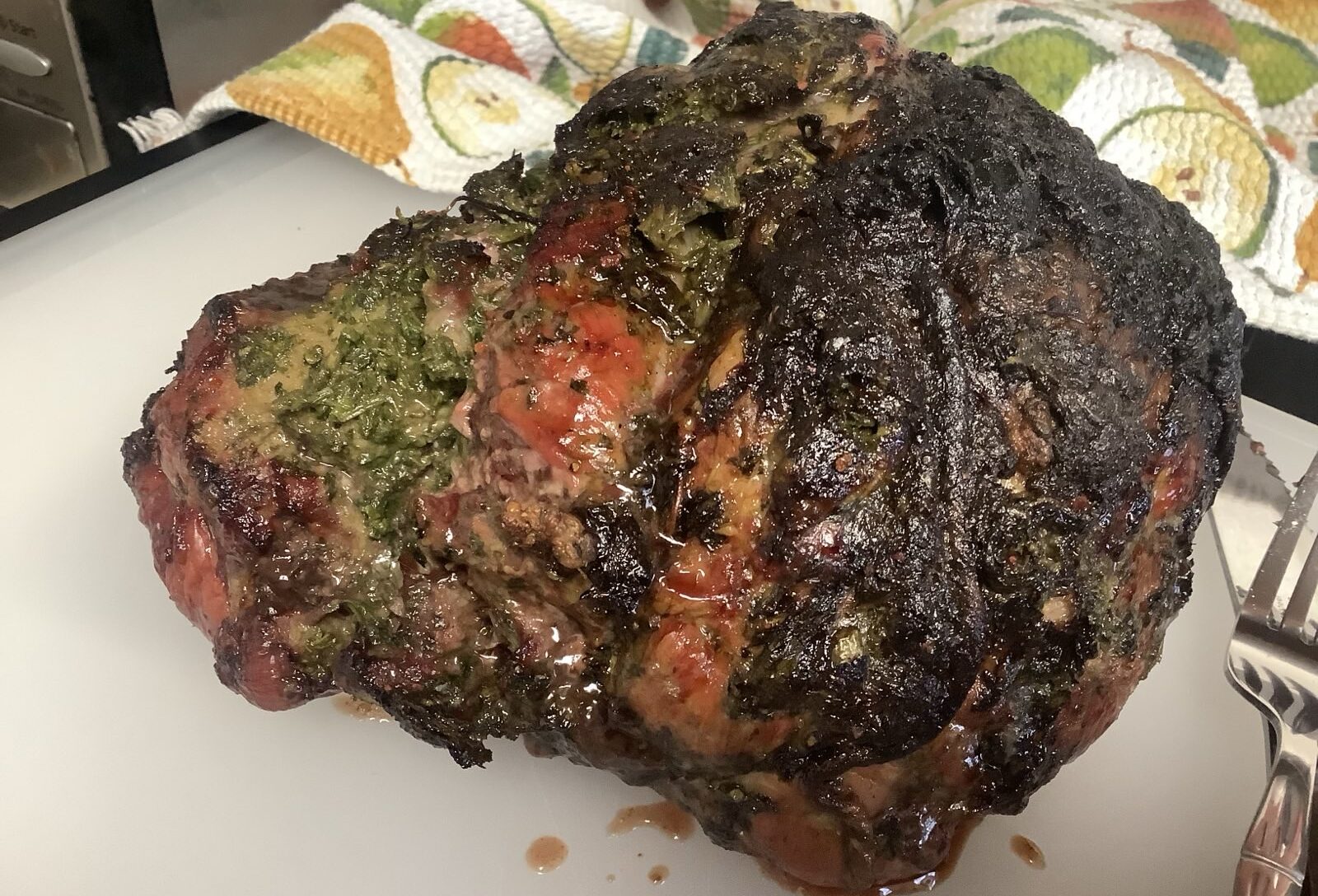Carnero Asado de Juan de Teva
Juan de Teva's Roast Lamb

Much of Spain's riches during the late Middle Ages and early Modern Age came from sheep. Wool, in particular. Immense flocks of sheep took advantage of the peninsula's pastures, and they only increased in size as the Christian kingdom conquered the Muslim ones and took over their lands. Thus lamb was commonly eaten by Christians, Jews and Muslims. Jews, however, had to "kosherize" the meat before cooking it. This consisted in washing it on several changes of salted water to draw out all the blood, and of cutting off the sciatic nerve and the fat around it from the lambs' legs. Thus accusations of doing so against a converso, was an accusation of being a secret or crypto-Jew.
Juan de Vera was a third generation converso whose family was well known for keeping the Sabbath and other Jewish customs. His father had been killed by a previous Inquisition, and when the Inquisition turned to look at him some decades later, he fled to Portugal. That only meant that he had a trial in absentia, at which a witness testified that they had seen him buy a leg of lamb and make a cut lengthwise on it. The witness couldn't tell whether Juan had removed the nerve, but the implication was that there wasn't another reason why he would have cut the leg lengthwise otherwise. . Juan was found guilty by the Inquisition, but as he was in Portugal, an effigy of himself was burnt instead. His wife, who was also tried, was also found guilty, but given a light sentence in recognition that most of the testimony against her was from neighbors with whom she frequently quarreled.
There was no information about how Juan's leg of lamb was cooked in the Inquisition's records, other than it was roasted, so the recipe comes from others common in Andalusia at the time. It calls for a boneless leg, but I decided to make it because semi-boneless legs of lamb were on sale that week, so I deboned it myself. I'm not sure if in the process of doing that I managed to remove the sciatic nerve as well - simply because I'm still not sure what it looks like, but I did try to get as much internal fat out of it as I could.
I made a couple of changes to the cookbook recipe. First, the cookbook recipe called for an egg as the binder for the marinade. Instead, I used olive oil. Using an egg just did not feel right to me - though it is kosher to mix eggs and meats -, and eggs are pretty expensive at the moment. Olive oil, meanwhile, was strongly associated with Jews in Spain. Christians usually used lard, which obviously was forbidden to Jews. Thus a converso who continued to use olive oil was suspected of being a crypto Jew. The olive worked well here.
The other change I made consisted of using bitter orange marmalade instead of the frozen orange juice concentrate that the cookbook recipe called for. Obviously, the latter was not in existence during the early modern era; the cookbook authors chose it as a replacement for the mixture of Seville oranges and sugar that the Spaniards of the time used, claiming that our oranges today are too sweet in comparison to the ones back then. I don't see how frozen orange juice concentrate solves this problem, however. Seville oranges continue to be bitter and they are commonly used, mixed with sugar, to make marmalade. To me, it seemed a better and more authentic replacement. I can't say that the lamb had anything but the faintest of hints of orange flavor, so perhaps it would have been better with juice concentrate, but I simply couldn't make myself use that.
In all, I really liked this recipe - it made one of the moistest and tastiest legs of lamb I've ever had. I will say that the main flavor was mint, it just overwhelmed everything else, but mint goes very well with lamb and it was nice to have the flavor incorporated into the meat rather than as a sauce. It's definitely a dish worth making.
PRINT PDF
Juan de Teva's Roast Lamb
Ingredients
- 1 boneless leg of lamb (about 4 lbs)
- 3 cups fresh cilantro, stems included, chopped (1 bunch)
- 1 cup fresh mint leaves, chopped (1 bunch)
- 2 Tbsp fresh marjoram leaves (1/2 package)
- 3 Tbsp olive oil
- 2 tsp ground pepper
- 1 1/2 tsp salt
For the sauce
- 1/2 cup bitter orange marmalade
- 1/2 cup water
- 3 Tbsp red wine vinegar
- 1/2 tsp cinnamon
- 1/4 tsp ground cloves
Directions
Pat dry the lamb.
Using an electric food processor, mince together the cilantro, mint leaves, marjoram leaves, olive oil, ground pepper, salt and 1 Tbsp water.
Press the mixture into the inner part of the lamb leg and then the outer one. Cover the lamb tightly with plastic wrap (or a kitchen cloth), and refrigerate for at least 8 hours.
Preheat oven to 450°F.
Uncover lamb and transfer to a broiling pan. Place in the oven and roast for 30 minutes.
Meanwhile, combine all sauce ingredients in a small saucepan. Heat over medium-low heat, stirring, until the sauce is hot but not boiling. Set aside.
Reduce oven temperature to 350°F. Remove broiling pan and carefully pour the sauce over the lamb. Return to the oven and continue roasting - about 12 minutes per pound for medium-rare.
Remove from the oven and let sit for 10 minutes before serving.
|
Adapted from a recipe in David M. Gitlitz and Linda Kay Davidson's A Drizzle of Honey; The Life and Recipes of Spain's Secret Jews
Do you have a comment on this recipe? Please make it here
Crypto-Jewish/Converso Recipes | Marga's International Recipes | Marga's Best Recipes | Marga's Food Blog | E-mail
|